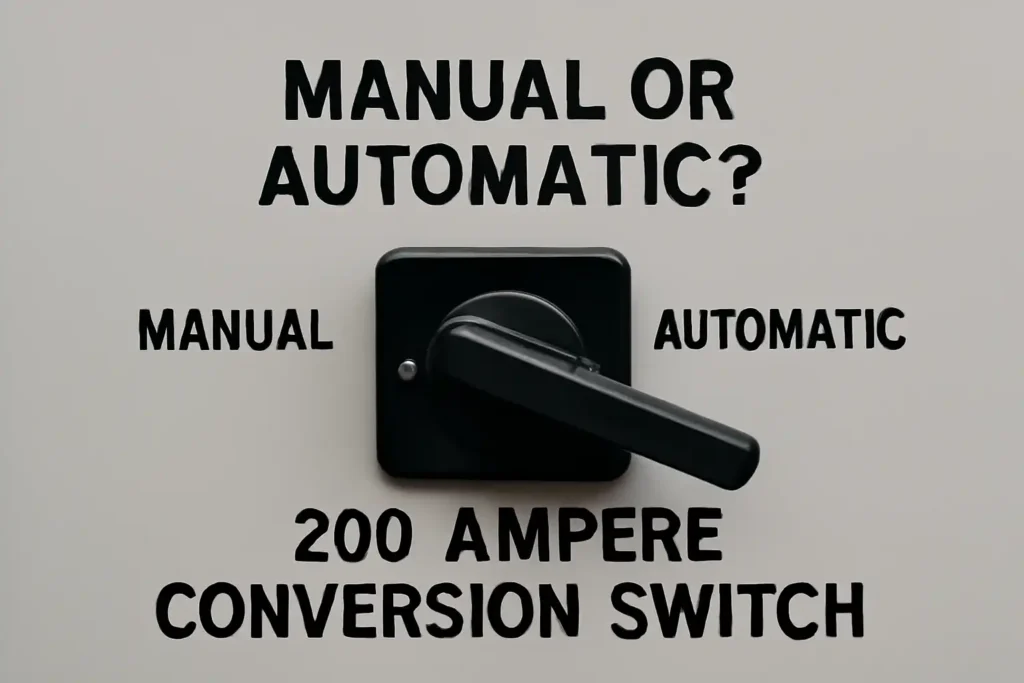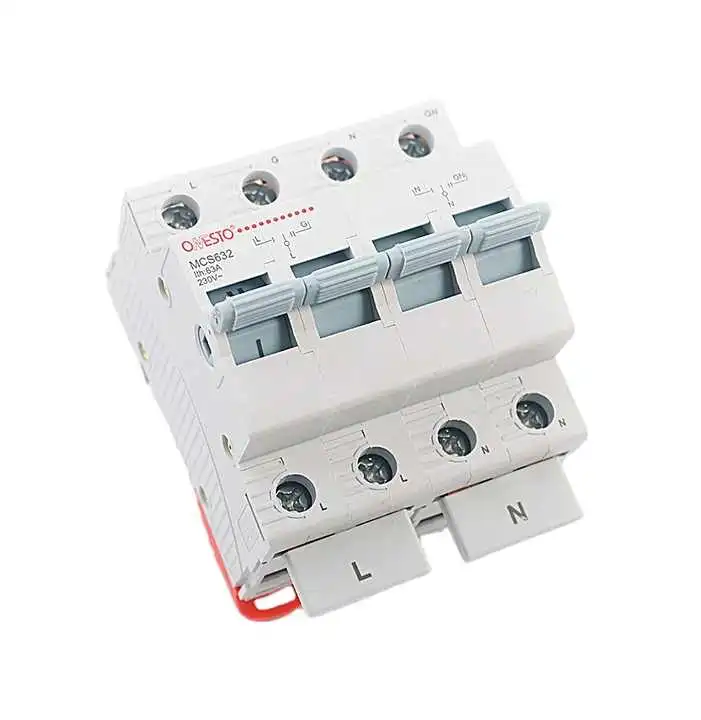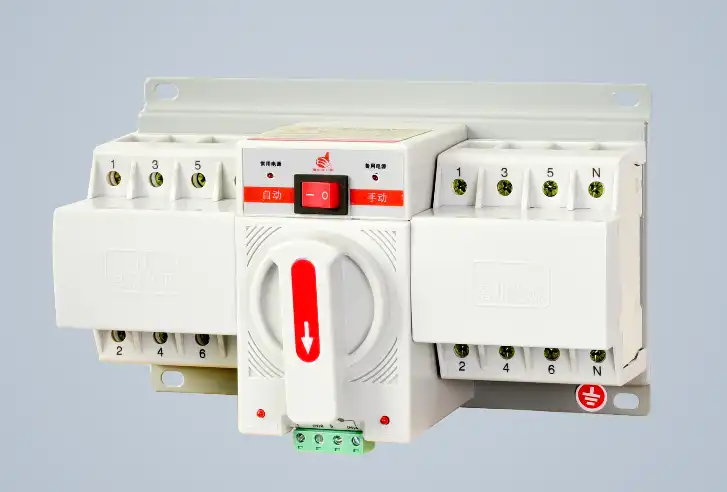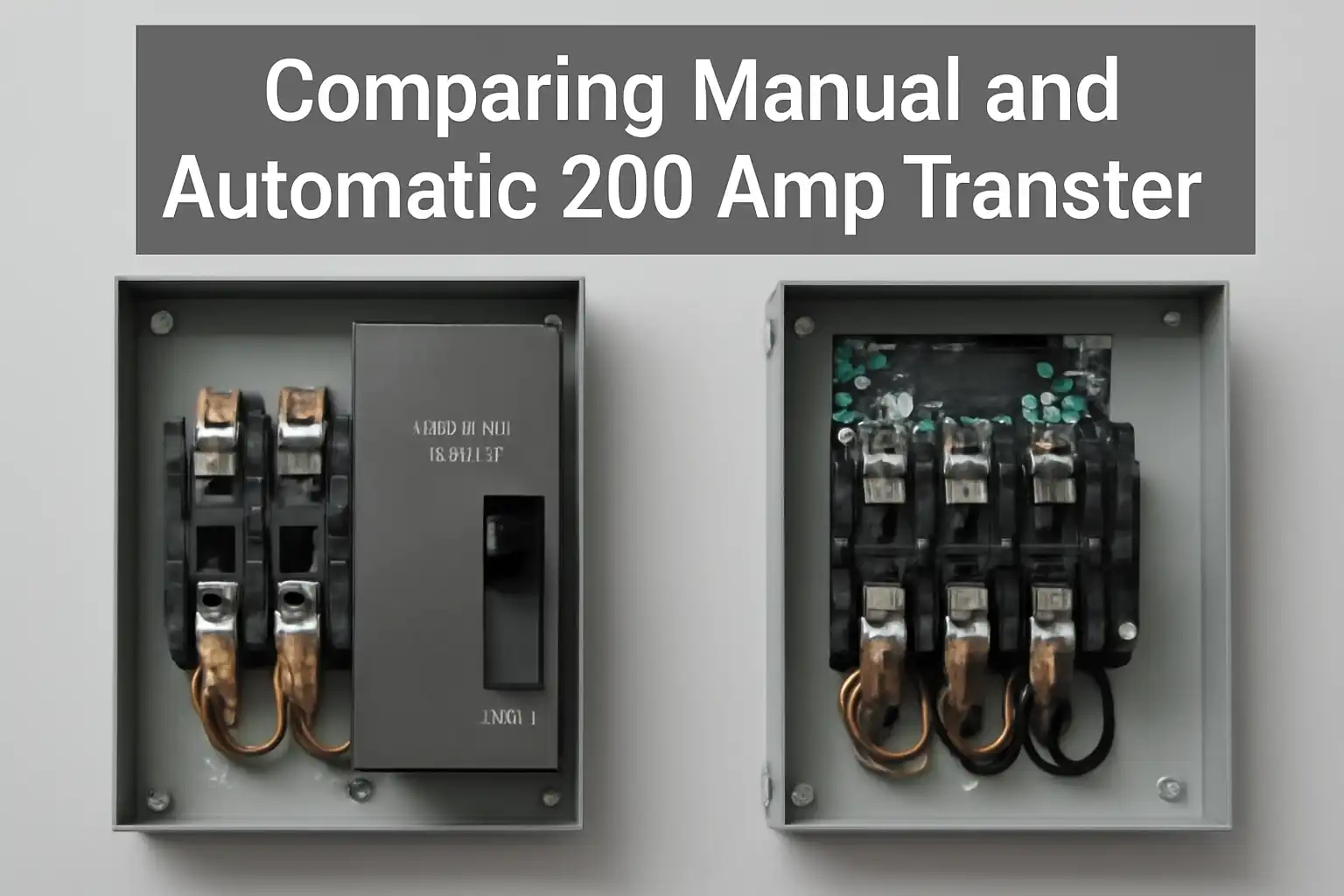Have you thought about keeping power on during an outage? A 200 amp transfer switch helps switch between utility power and a generator. But here’s the main question: should you pick manual or automatic? The difference is easy. A manual switch needs you to do it yourself. An automatic switch does it for you without help.
Your choice depends on what you care about—cost, ease, or dependability. For example, automatic switches are crucial in important places, with over 56% using them. Meanwhile, about 42% of medium users like manual switches for being simple. Whatever you pick, make sure it matches your main breaker’s amperage to work well.
Key Takeaways
- Manual transfer switches are cheaper and let you control power. They are great for people who stay home often.
- Automatic transfer switches are easy to use and very reliable. They switch power by themselves during outages, which is important for homes or businesses needing nonstop power.
- Think about your budget and power needs before picking a switch. Manual switches cost less at first, but automatic ones save money later by stopping downtime.
- Both types of switches need regular care to work safely and properly during power outages.
- Look at your situation, like how often outages happen and if nonstop power is important, to choose the right switch for you.
Manual 200 Amp Transfer Switches
What Is a Manual 200 Amp Transfer Switch?
A manual 200 amp transfer switch lets you pick your power source. It can handle up to 200 amps, making it great for bigger systems. These switches are usually mounted on walls and made from strong materials like steel. Here’s a simple list of its features:
- Rating: 200 A
- Mounting: Wall-mounted
- Type: NEMA Type 4/12, with stainless steel options
- Lug Connections: #6 – 300 MCM Cu/Al
- Weight: About 80 lbs.
- Dimensions: 32.4 inches tall, 20 inches wide, 13.4 inches deep
- Material: Mild steel or stainless steel
- Finish: ANSI 61 gray or clear brushed
This switch is a solid choice for power control during outages, especially if you like doing it yourself.
How Manual Transfer Switches Work
Using a manual transfer switch is simple. When the power goes out, you flip the switch to change from utility power to generator power. This gives you full control over when the power changes.
Here’s why this is helpful: you can check both power sources before switching. This helps avoid problems like overloading or damage. But remember, you need to be there to operate it. In emergencies, this could cause delays if you’re not ready.
Advantages of Manual Transfer Switches
Manual transfer switches have many benefits that make them a good option:
- Cost-Effective: They cost less than automatic switches. Their simple design saves money upfront and makes them cheaper to install and maintain.
- Control: You decide when to switch power. This control is useful if you want to check everything first.
- Durability: Made with tough materials, these switches last a long time. They work well for homes and businesses.
- Simplicity: With fewer parts, manual switches are less likely to break. This makes them more reliable in some cases.
If you want an affordable and easy way to manage power, a manual 200 amp transfer switch might be the best choice.
Downsides of Manual Transfer Switches
Manual transfer switches are cheaper and give you control. But, they also have some problems that might make you reconsider.
1. You Must Be There
You need to be present to use manual switches. If you’re not home during a power outage, the generator won’t turn on. This delay can cause problems for homes or businesses needing constant power.
Tip: Think about how often you’re away. This could affect your choice.
2. Takes Time to Switch
Manually switching power isn’t instant. You have to check the situation, prepare the generator, and then switch. This can slow things down for systems needing fast power recovery.
3. Mistakes Can Happen
People make errors. Forgetting to check the load or flipping the switch wrong can cause trouble. Problems like power surges, overloaded generators, or damaged systems might occur.
Here’s a simple table showing how these issues affect reliability:
| Problem Description | How It Affects Reliability |
|---|---|
| Needs someone there to operate during an outage | Causes downtime if no one is around to start the generator. |
| Switching takes time because it’s done manually | Can interrupt work or cause data loss for systems needing steady power. |
| Mistakes during switching can happen | May lead to surges, generator overload, or damage to electrical equipment. |
These issues show why manual switches might not work for everyone. If you need quick and reliable power, you may want to look at other choices.
Automatic 200 Amp Transfer Switches
What Is an Automatic 200 Amp Transfer Switch?
An automatic 200 amp transfer switch changes power from the grid to a generator. It works on its own, so you don’t need to be there. It handles up to 200 amps, making it great for big homes or businesses needing steady power.
These switches are made for safety and ease of use. For example, models like Generac’s 200 amp single-phase service switch sense when grid power fails. They then switch to generator power automatically. They also stop electricity from flowing back between power sources, keeping things safe.
Here are some main features of automatic 200 amp transfer switches:
- Application: Works for homes or businesses.
- Poles: Uses 3 poles for better power control.
- Voltage: Handles up to 240 volts.
- Enclosure: NEMA 3R rated for outdoor use, resists weather.
- Safety Compliance: Meets UL 1008 rules for safety and efficiency.
These switches are great for powering your whole house. They focus on key circuits, keeping important things like fridges and HVAC systems running during outages.
How Automatic Transfer Switches Work
Automatic switches work without much effort from you. When power goes out, the switch notices and starts the generator. Once the generator is ready, it moves the power load to it. When grid power comes back, the switch shuts off the generator and reconnects to the grid.
There are two ways these switches transfer power:
| Transition Type | Description | Key Features |
|---|---|---|
| Open Transition | Stops power briefly before switching. | – Short power break. – Stops back feeding. – Not for critical systems. |
| Closed Transition | Switches power without stopping. | – No power break. – Syncs power sources. – Costs more and is harder to set up. |
Most homes use open transition switches. They pause power briefly to stay safe and avoid back feeding. But for places like hospitals or data centers, closed transition switches are better since they keep power steady.
Advantages of Automatic Transfer Switches
Automatic switches have many benefits that make them popular:
- Enhanced Safety: They switch power automatically, lowering risks of mistakes or accidents.
- Speed and Convenience: They act fast, so outages don’t last long. You don’t need to be there to use them.
- Protects Electronics: Smooth switching stops voltage spikes, keeping devices safe.
- Keeps Productivity Up: With no power breaks, work or business can continue.
- Meets Rules: Some industries, like healthcare, need reliable power. These switches help meet those needs.
- Saves Money Over Time: Though they cost more upfront, they save money by preventing downtime and protecting equipment.
Demand for these switches is growing fast. Between 2022 and 2027, the market is expected to grow by USD 286.02 million, with a yearly growth rate of 7.17%. This rise is due to the need for steady power as older systems fail more often.
If you want a dependable and easy way to handle power during outages, an automatic 200 amp transfer switch is a smart choice.
Drawbacks of Automatic Transfer Switches
Automatic transfer switches (ATS) are helpful but not perfect. If you’re thinking about getting one, it’s good to know the downsides. Let’s look at them.
1. High Initial Costs
Automatic switches cost more than manual ones at first. Their advanced features make them expensive to buy and install. If money is tight, this might be a problem.
Tip: Think about the future. The high cost now could save you time and money later.
2. Complex Installation
Setting up an automatic switch isn’t easy. You need a professional to install it correctly. If it’s not done right, it may fail during an outage.
Callout: Hire a licensed electrician to install it. This keeps the system safe and working well.
3. Ongoing Maintenance
Automatic switches need regular care to work properly. Over time, parts like sensors can break or loosen. Without maintenance, the switch might fail when you need it most.
Why maintenance is important:
- It stops problems that could leave you without power.
- It keeps the switch running safely and smoothly.
4. Operational Expenses
The costs don’t end after installation. Repairs and upkeep can add up over time. Frequent use can cause wear, increasing these costs.
5. Potential for Failure
Even though they’re reliable, automatic switches can still break. If they fail, you might lose backup power when you need it most. Fixing problems early helps avoid this risk.
Note: Regular checks can catch issues early and keep your system working.
Automatic transfer switches are great for smooth power changes. They’re especially useful for homes and businesses needing steady electricity. But their cost and complexity might not suit everyone. Think carefully about these drawbacks before deciding.
Comparing Manual and Automatic 200 Amp Transfer Switches
Cost and Budget Considerations
Manual and automatic switches have very different costs. Manual switches are cheaper upfront because they are simpler. Automatic switches cost more due to their advanced features.
| Type of Switch | Price |
|---|---|
| Manual | 20$-200$ |
| Automatic | 200$-3000$ |
Automatic switches may seem expensive at first. But they save money later by reducing downtime and protecting equipment. If you have a small budget, a manual switch is a good choice. If you want convenience and reliability, an automatic switch is worth the extra cost.
Convenience and Ease of Use
Automatic switches are very convenient. They work on their own. When power goes out, they detect it and start the generator. You don’t need to do anything. This is great if you’re not home or need power fast.
Manual switches need you to be there. You have to flip the switch yourself to change power sources. This gives you control but can be hard during emergencies or if you’re away. If you want something easy to use, automatic switches are the best choice.
Reliability and Performance
Automatic switches are more reliable. They use smart systems to detect power loss and switch quickly. This reduces downtime and protects sensitive devices. Here’s a comparison:
| Feature | Automatic Transfer Switch (ATS) | Manual Transfer Switch (MTS) |
|---|---|---|
| Reliability | High, uses advanced systems | Depends on user skills |
| Speed | Fast, switches instantly | Slower, needs manual action |
| Risk of User Error | Low, automated | High, depends on user actions |
| Maintenance | Less often needed | More frequent, user-dependent |
| Stability | Works well in tough conditions | Can vary with user errors |
Automatic switches lower the chance of mistakes, like power surges or damage. Manual switches are reliable too but depend on how well you use them. If you need strong performance and reliability, go with an automatic switch.
Safety Features
Safety is very important for transfer switches. Both manual and automatic 200 amp transfer switches have features to keep you, your home, and your devices safe. Here’s a simple breakdown:
- Prevents Backfeeding
Backfeeding sends electricity the wrong way. This can hurt utility workers or damage your system. Transfer switches stop this by keeping the generator separate from the main power grid. - Overload Protection
Overloading can harm your generator or appliances. Many switches have circuit breakers to stop this. These breakers shut off power if the load gets too high, protecting your system. - Clear Labels and Warnings
Both types of switches have clear labels and warnings. These show you how to use them safely. For example, labels might tell you which circuits connect to the generator. - Weatherproof Enclosures
Outdoor switches often have weatherproof covers. These protect the switch from rain, snow, and bad weather, so it works when needed.
Automatic switches add extra safety. They handle power changes by themselves, lowering the chance of mistakes. This makes them a good choice for worry-free outages.
Installation and Maintenance Requirements
Setting up and caring for a 200 amp transfer switch needs careful work. Whether you pick manual or automatic, following the right steps keeps it safe and reliable. Here’s what to know:
Installation
Installing a transfer switch isn’t something you should do yourself. A licensed electrician is needed to connect it to your main panel and generator. For automatic switches, they’ll also set up sensors and controls. Proper installation makes sure the switch works well during outages.
Maintenance
Regular care keeps your transfer switch working properly. Here’s a simple guide to what’s involved:
| Section | What to Do |
|---|---|
| Visual and Mechanical Inspections | Look for clear labels, warnings, and check the switch’s condition. |
| Main Contacts and Bolted Connections | Test connections to make sure they’re strong and working well. |
| Manual Transfer Operation | Try switching manually to check if it works smoothly. |
| Insulation Resistance Tests | Test wires to make sure they’re insulated and safe. |
| Control Devices | Check and adjust control devices for accuracy. |
| Automatic Transfer Tests | Pretend there’s a power outage to test automatic switching. |
| Operation and Timing Tests | Check how fast and well the switch works. |
| Functional Test Procedure | Test the switch and generator together to ensure everything works. |
Regular checks stop problems and help your switch last longer. For automatic switches, testing sensors and timing is very important. Always hire a professional for maintenance to stay safe.
Choosing the Right 200 Amp Transfer Switch for Your Needs
When to Choose a Manual Transfer Switch
A manual transfer switch is simple and gives you control. It’s a good choice if you’re okay switching power yourself during outages. These switches cost less upfront, making them great for smaller budgets.
Manual switches work well if downtime isn’t a big deal. For example, they’re fine if you only need power for a few hours or don’t mind switching manually. They’re also good for people who like hands-on solutions and learning how to use a generator.
Tip: If you’re home often and want to save money, pick a manual transfer switch.
When to Choose an Automatic Transfer Switch
Automatic transfer switches are best for reliability and ease. They’re great for homes or businesses needing steady power. If you’re away often or can’t handle downtime, these switches start your generator automatically.
They’re ideal for places like hospitals, data centers, or homes with medical devices. Automatic switches lower mistakes and keep power running, making them safer. The market for these switches is growing fast, with predictions showing it could hit $2.7 billion by 2032 due to high demand.
Callout: Want worry-free power during outages? An automatic transfer switch is worth the cost.
Questions to Ask Before Making a Decision
Before choosing, ask yourself these questions:
- How often do power outages happen?
- Do you need backup power for important systems or just basics?
- Are you okay using a manual switch, or do you prefer automatic?
- What’s your budget for setup and upkeep?
- Do you need features like weatherproof covers or UL 1008 safety certification?
Here’s a quick checklist to help you decide:
- Power meters to track usage.
- Tie bars for switching single-pole breakers to double-pole.
- Weatherproof inlet boxes for outdoor use.
- Long cords for safe generator connections.
Answering these questions will help you choose the right switch. Whether manual or automatic, make sure your 200 amp transfer switch fits your needs.
Picking between a manual or automatic 200 amp transfer switch depends on your needs. Manual switches cost less and let you control power changes. Automatic switches are easier and more reliable, especially for important systems.
Different industries benefit by choosing the right switch. For example:
| Industry | How the Switch Helps | Key Advantages |
|---|---|---|
| Data Centers | Keeps servers running without power breaks | Avoids data loss and downtime |
| Healthcare | Powers vital medical devices | Keeps patients safe and operations smooth |
| Factories | Prevents power cuts from damaging machines | Boosts work output and lowers repair costs |
| Telecom | Protects key communication systems | Ensures smooth and steady operations |
Think about your situation carefully. Consider how often power goes out, your budget, and if you need constant power for key systems. The best switch is the one that fits your priorities.
Tip: Choosing the right switch keeps your systems safe and running smoothly.
FAQ
1. What happens if I pick the wrong amperage for my transfer switch?
Choosing the wrong amperage can harm your system. It might overload or not provide enough power. A 200 amp transfer switch must match your main breaker’s amperage to work safely and properly.
Tip: Check your main breaker’s rating before buying a transfer switch.
2. Can I set up a transfer switch myself?
No, it’s not a good idea. Installing transfer switches needs a professional to ensure safety and follow electrical rules. Doing it wrong can cause failures or dangers.
Note: Always hire a licensed electrician to avoid costly problems.
3. Do automatic transfer switches work every time the power goes out?
Yes, automatic switches detect outages and start the generator. But they need regular care to stay dependable. Skipping maintenance can make them fail when you need them most.
4. Are manual transfer switches safe to use?
Yes, manual switches are safe if used the right way. They have features like overload protection and clear instructions. But mistakes, like backfeeding, can cause damage or safety risks.
5. How often should I take care of my transfer switch?
You should check it once a year or after heavy use. Regular maintenance keeps it working well and avoids failures during outages.
Callout: Don’t skip maintenance—it keeps your system safe and reliable.
The following information may be of interest to you
Rail type 2P 4P manual conversion switch
The Best Automatic Transfer Switch for Solar Energy in 2025







